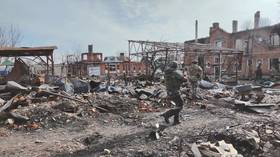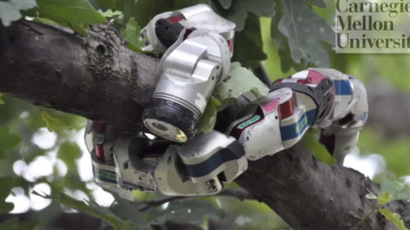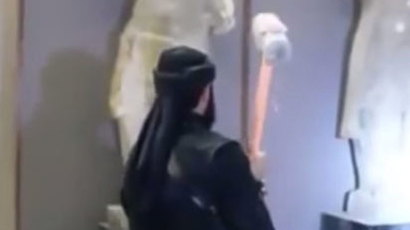Russian archaeologists excavate ‘White Walls’ of ancient Egyptian capital Memphis

A Russian archaeological expedition spanning more than a decade has unearthed the enclosure walls of the first capital of Egypt – the legendary city of Memphis that was the heart of Egyptian civilization for over 2,000 years.
Scientists from the Egyptology Studies Center of Russian Academy of Sciences (CESRAS) have excavated the foundation of what they believe once were huge walls that used to surround the ancient Egyptian capital currently known under its Greek name, Memphis.
The success of the Russian effort to bring to light part of the 5,200 year-old walls was confirmed by Egypt’s Antiquities Minister Mamdouh al-Damaty.
“Several white limestone fragments of the ancient capital’s wall were discovered during excavation work carried out by an archaeology team of the Russian Institute of Egyptology at Kom Tuman, south of Giza Pyramids,” said Damaty.

“We hope this finding will enhance our knowledge of one the most important cities of Ancient Egypt. Memphis played a significant political, religious and economic role in the history of the country. One of its names was Inbu-Hedj, or the White Walls,” the minister said.
Excavations on the new wall in Memphis will last for unknown time as the occupation layer reached 15 meters, as was revealed during control drilling on the site, CESRAS director Galina Belova told RT.
“Conceptually, this archaeological site is inexhaustible,” Belova said. “If only we had...better financing, we would made the excavation site much larger, but unfortunately, under-financing narrows our research a great deal,” she said.

Fifteen years ago, when Russian Egyptologists first obtained a concession from the Egyptian government, they were looking at three sites that used to be the highest hills once hosting the city in the ancient Nile’s delta.
Parts of the walls which were unearthed at the Kom Tuman archaeological site are very rich in handicraft findings, as the CERES expedition has already found quite a lot of artisan production shops, including a number of pottery making ovens and bronze tools.
While Egyptian authorities are taking efforts to maintain free and secure conditions for Russian archaeologists on the site, Belova said that amid turbulence following the revolution some of the locals have been devastating archaeological sites.

“As soon as we leave an excavation they dig it with holes in hope that we have hidden some kind of gold things there. The farmers desperately need land and they occupy more and more territories that are actually historic sites,” Belova said, stressing that Egyptian officials are very helpful and assist a lot to the scientists, while for the local population history is something out of their world.
The scientists have addressed Egyptian Ministry of Antiquities to prevent spoliation of the archaeological site of Memphis. The ministry promised to block off the Kom Tuman Complex with high wall similar to the one already erected around another ancient city of Luxor.

Belova informed RT that many foreign scientists are working with Russian colleagues as members of the CESRAS expedition in Egypt. Egyptologists from Austria, Germany, the US and many other countries are taking part in excavations.
Originally, Memphis was centered around a pharaoh palace erected on a platform to dominate the nearby territory. The palace was surrounded by a large number of military headquarters and fortifications that occupied a huge territory estimated 500 hectares.
Memphis is now an open-air museum is multilateral, and while the deepest layers are dated before 3,000 BC, the city lasted for over 2,500 years, with one of the latest, the 26th pharaoh dynasty, also constructing a palace on the remaining foundations of the ancient buildings.















